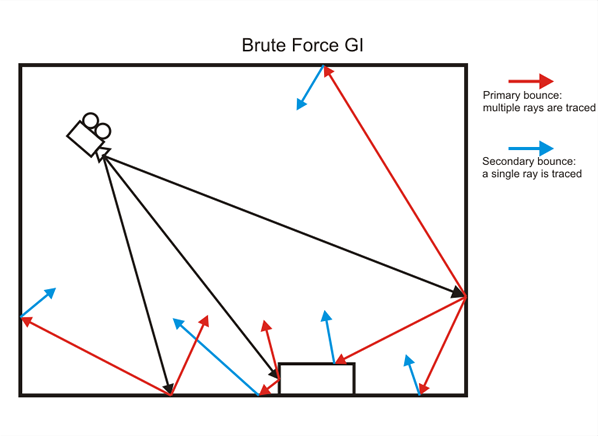Brute Force GI
This page provides information on the Brute Force GI engine.
Overview
The Brute force method for computing global illumination recomputes the GI values for every single shaded point separately and independently from other points. While very slow, this method is very accurate, especially if you have many small details in the scene.
To speed up Brute force GI, you can use a faster method like the Light Cache for approximating secondary GI bounces, while using the brute force method for the primary bounces.
For more details on the render settings used within the Brute force GI engine, please see the Brute Force Settings page.
The following diagram shows the way rays are traced when using the Brute Force GI. Since the method is view dependent, the first rays (Black) are traced from the camera into the scene in order to determine the points for which GI is going to be calculated. Then the Primary bounces (Red) are traced into the scene - the number of rays traced depends on the Subdivs parameter. The Secondary bounce rays (Blue) are traced only when Brute Force GI is used for secondary GI engine. In that case a single ray is traced for each bounce and the number of bounces depends on the Secondary Bounces parameter.

Notes
-
You can speed up the Brute Force calculations by distributing them among several machines with the help of Distributed Rendering (DR).
-
For more details on how to set up the render calculation settings used within the Brute force GI engine, please see the Brute Force Settings page.